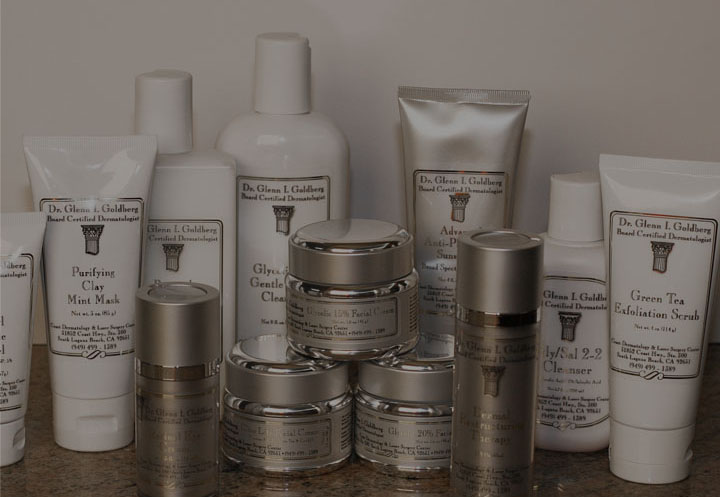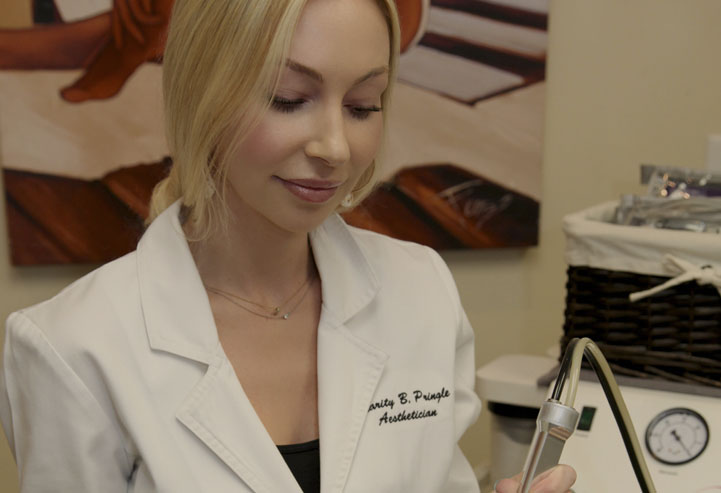The High Cost of Free Radicals

August is the unofficial Free Radical Damage Month when the majority of free radical skin injuries occur. Several skin care treatments and products can help protect your skin from the ravages of free radicals. Here’s what you should know about the compounds that wreak havoc on your complexion and leave you susceptible to significant medical concerns.
It’s summertime, and the livin’ isn’t easy on your skin. With temperatures throughout the United States skyrocketing to unprecedented highs, ultraviolet (UV) exposure is an ever-present threat to the health and comfort of your complexion. While sunscreen is critically important and can offer significant protection, the sun isn’t the only element that causes long-term problems.
You only need to spend an afternoon in an urban area to fully appreciate the extent of the pollution we absorb simply by breathing while outdoors. While you can cleanse away much of the external grit and grime, environmental pollutants are insidious, and they can’t be showered away. These pollutants can be absorbed into your cells and trigger a chemical response that can have a negative effect on your health and appearance.
But what about free radicals? What does pollution have to do with free radicals?
Pollution and sun exposure are two of the major contributors to free radical damage. Other conditions that contribute to free radical damage include:
- Smoking
- Alcohol consumption
- Ionizing radiation (exposure to X-rays or other radioactive elements)
- Poor nutrition
- Physical and psychological stress/trauma
The presence of free radicals is found everywhere, like pollutants, but their effects are not immediately apparent. Nevertheless, the harm resulting from them can be quite serious.
What are free radicals?
Free radicals are unstable oxygen-containing molecules or atoms. They are unstable because they contain an uneven number of electrons, leaving something called an unpaired electron. This unpaired electron causes a reactive response in the atom or molecule, causing it to seek other molecules or atoms with unpaired electrons.
When molecules seek other molecules with unpaired electrons, it causes a series of chemical reactions, a process known as oxidation. The presence of molecules called antioxidants helps manage the chemical response because antioxidant molecules can spare an electron without destabilizing.
When the number of free radicals and antioxidants is balanced, the oxidation reaction doesn’t yield negative health effects. In fact – free radicals are necessary to ward off infection. When there are too few antioxidant molecules to balance the free radicals, however, oxidative stress occurs.
Oxidative stress can cause changes to your DNA, which can lead to inflammatory diseases, diabetes, hypertension, and even cancer. It is also a major factor in premature aging.
What is free radical skin damage?
Free radical skin damage has numerous presentations. Dark spots, wrinkles, skin laxity, and fine lines are all common examples of free radical skin damage.
How do we protect ourselves from free radical damage?
We are exposed to free radicals from our environment, but we also create free radicals through normal cellular metabolic processes. Needless to say, it’s impossible to avoid free radicals entirely (and we shouldn’t, even if we could). However, we can balance them by consuming antioxidants.
Foods rich in antioxidants are among our greatest allies in the fight against free radical supremacy. According to the United States Department of Agriculture (USDA), the foods with the highest concentration of antioxidants include:
- Dark, leafy green vegetables
- Apples
- Black Beans
- Kidney Beans
- Plums
- Blackberries
- Strawberries
- Avocado
- Green tea
An antioxidant-rich diet can help reduce your risk of oxidative stress from exposure to environmental free radicals. However, you can absorb antioxidants topically, too.
Do antioxidant skin products help prevent free radical damage?
Antioxidant-rich skin care products can help you fight oxidative stress and free radical damage in your skin. Here are some of the most effective products for combatting environmental stressors.
West Derm Gentle Antioxidant Soothing Cleanser
Your skincare routine starts with a cleanser. West Derm’s Gentle Antioxidant Soothing Cleanser gently lifts makeup, dead cells, and impurities from your skin while delivering the antioxidant benefits of green tea polyphenols, Vitamin C, and other botanicals.
SkinCeuticals Antioxidant Lip Repair
Don’t neglect your pout! SkinCeuticals’ Antioxidant Lip Repair offers a boost of hydration from natural humectants and free radical-neutralizing Vitamin E and Silymarin.
West Derm IPL Bundle Botanical Serum + Antioxidant Sunscreen
The final stages of your skincare routine should include an antioxidant serum combined with an effective sunscreen. West Derm IPL Bundle Botanical Serum and Antioxidant Sunscreen combines a great boost of antioxidant support with the highest level of UV protection.
The best weapon against free radical damage is regular visits to a qualified dermatologist. Keep your skin healthy with an annual skin check with us. Schedule an appointment today!





